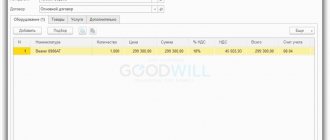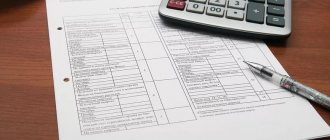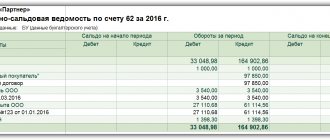Pharmacies have always had the right to preferential taxation. Organizations opening pharmacies became payers of a single tax on imputed activities. Individual entrepreneurs could choose between UTII and PSN - the patent taxation system. From January 1, 2021, everything will change. The Government of the Russian Federation has made changes to both the Tax Code and the legislation regulating the circulation of medicines. Pharmacies will have to refuse UTII and PSN.
Starting from the new year, a new task will appear - which tax regime to choose for a pharmacy. If you are in doubt and cannot calculate which taxation system is more suitable for your pharmacy establishment and whether you have the right to apply preferential programs (STS), contact a tax lawyer. A tax specialist will help you decide on a new regime and close the old one - UTII or PSN.
Cancellation of UTII and PNS
Reforming the pharmacy tax system has been planned for a long time. Now most pharmacies apply UTII - a single tax on imputed income, or imputation. If a pharmacy was opened by an individual entrepreneur, then he had the opportunity to choose between UTII and PSN - he declared imputation or received a patent for the retail sale of medicines.
UTII is becoming an irrelevant tax system, and everything is heading towards the fact that the tax authorities will abolish it. The first serious step will be taken on January 1, 2021. This is what will happen: many goods will begin to be labeled, and they will not be able to be sold in retail trade (Article 346.27 of the Tax Code of the Russian Federation). This also applies to medicines. Now all drugs and medicines are subject to mandatory labeling (Bill No. 834261-7). This is what will affect the taxation of pharmacies.
How it works? Products that contain any medicines are marked. All manufacturers and distributors of medicines (pharmacies or intermediaries) are registered in the Honest Sign system. Pharmacies purchase medications through this system and record the sale of drugs in it.
According to the new tax legislation, the sale of medicines with labeling and mandatory identifiers is not retail trade (clause 58 of Article 2 of 325-FZ of September 29, 2019). If a pharmacy ceases to engage in retail trade, then it does not have the right to use taxation under UTII or PSN. It turns out that the moment a pharmacy sells at least one medicine with a label, it loses the right to apply imputation or a patent taxation system.
It is logical that from January 1, 2021, pharmacies will not be able to use their old tax regimes (UTII, PSN). After the termination of commercial activities subject to a single imputed tax, pharmacy owners are required to notify the Federal Tax Service within five working days and switch to a new tax regime. But the beginning of January is always holidays, which means non-working days. Tax officials are giving a deferment - pharmacies will be able to switch to the new tax system until January 15, 2020.
There is one caveat - pharmacies have the right to sell without labeling those goods that were produced in 2021 and have an appropriate remaining shelf life (with the exception of drugs labeled on 10/01/2019). But, again, this does not in any way affect the change in the taxation system, because labeled drugs will also be sold along with unlabeled drugs.
To get away from the old tax regime, the owner of the pharmacy needs to submit an application to the territorial tax office. Organizations submit the UTII-3 form, and individual entrepreneurs submit the UTII-4 form. Do this no later than January 15, 2020!
Transition to other tax regimes
By default, it is believed that pharmacies that have lost the right to use UTII automatically switch to the general taxation system - OSNO. But this is not entirely true - owners have the right to choose the tax regime.
So, from January 1, 2020, pharmacies will not be able to use UTII and PSN. Two tax regimes will become available for organizations and individual entrepreneurs:
- General taxation system (OSNO) . The general regime carries the largest tax burden for pharmacies - with mandatory payment of VAT, personal income tax, income taxes, property taxes and transport fees (if there are vehicles).
- Simplified taxation system (STS, simplified) . This is a preferential tax regime that implies two options for paying tax. The owner of a pharmacy can choose an income scheme and pay a single tax of 6%, or the “income minus expenses” method and transfer 15% to the budget. Let’s say right away that the second option is more profitable for pharmacies, since their expenses are quite large, which can significantly reduce the final tax amount.
To switch to OSNO, no additional applications or documents are required. After submitting UTII forms 3 and 4, tax authorities will automatically transfer the pharmacy to the general taxation system.
With the simplified tax system everything is a little more complicated. This is a preferential tax regime, so not all organizations or individual entrepreneurs can apply it. A pharmacy can issue a simplified tax system if:
- the residual value of fixed assets is not higher than 150 million rubles;
- the average number of employees is no more than 100 people;
- total revenue for the three previous quarters (nine months) is 112.5 million rubles, for the annual period - 150 million rubles.
These are quite high figures, so most pharmacies have the right to apply for a simplified form. Moreover, tax authorities allow minor violations of regulations. If during the reporting period the number of employees increases to 130 people, and annual revenue increases to 200 million rubles, then the Federal Tax Service, as a fine, will increase the single tax rate under the simplified tax system to 8% for the income method and 20% for the expense method.
However, to switch to the simplified tax system, business owners will have to hurry. You can apply for a simplified tax regime only if you refuse UTII in 2021 and immediately submit a notification (form No. 26.2-1) about the appointment of the simplified tax system. The deadline for informing tax authorities is December 31, 2019. If you don’t make it in time, then from 01/01/2020 you will work for OSNO.
Sources:
On amendments to the legislation on the circulation of medicines
On amendments to the Tax Code of the Russian Federation
About retail
Features of accounting and tax accounting in a pharmacy
Most pharmacies belong to trade and retail organizations. They organize and maintain accounting and tax records accordingly. But it does without certain specifics. It is determined by the applicable taxation system and the characteristics of the activities of a particular organization.
If a pharmacy carries out only retail sales of drugs, accounting is similar to that in a regular store. Adding to the complexity of organizing and maintaining accounting are the rental of medical products, the manufacture of prescription medications (essentially a production component), and working with substances that require special control.
Organization of accounting
Accounting in a pharmacy can be centralized, decentralized, or mixed. The first is relevant for enterprises that are on the balance sheet of parent organizations. Centralized accounting involves the preparation of primary documentation, registration of data in special programs and accumulative statements, from the retail turnover journal to the cash book. Record keeping is carried out in accordance with the instructions approved by the Ministry of Health. The results of the financial and economic activities of such a pharmacy are reflected in the balance sheet of the parent organization.
Pharmacies, which are independent business entities, organize and maintain decentralized accounting. They have current accounts, prepare and submit balance sheets, tax returns and other reporting forms.
Mixed accounting is relevant for pharmacy chains. A centralized organization maintains full-fledged accounting. Its divisions prepare primary records, enter data into books, journals and electronic databases. The results of the financial and economic activities of the network are reflected in the balance sheet of the centralized organization. She also submits current reports for each tax period.
Features of medication accounting
Sales of finished medicines by a pharmacy can be carried out wholesale or retail. Sales to retail customers are reflected in accounting in monetary terms according to cash register data. The organization supplies goods to medical institutions and other pharmacies according to invoice requirements
If a pharmacy sells medicines in bulk, a journal of wholesale accounting of settlements with customers is kept. Reconciliation of calculations is carried out monthly. Based on its results, a turnover sheet is compiled. There are also special features in accounting for the sale of medicines using preferential, free prescriptions. Such sales are reflected in the consolidated register of the appropriate form. A product report is also mandatory; it is compiled by financially responsible persons, pharmacy accountants. The incoming part of the report contains data on the receipt of drugs and other goods and materials. The document also includes revaluation of containers and other operations. Medicines must be recorded at purchase or sale cost. Auxiliary materials and containers too. The accounting method is fixed in the accounting policy.
The expense part of the product report is used to reflect the sales amount. When determining it, a reconciliation is carried out with the data of fiscal drives of cash registers.
Transactions with medicines, which are goods for a pharmacy, are reflected on account 41. If accounting is kept at the sales price, the accrued trade margin is reflected on account 42. It is important to take into account the restrictions on trade margin that are relevant for pharmacies. If goods are received from a wholesale supplier, the maximum markup is 25%. When purchasing medications from a manufacturer, a pharmacy can use a 35% trade margin. In both cases, the markup is calculated based on the supplier's price excluding VAT.
Principles of accounting in a pharmacy
General accounting (fixed assets, assets, liabilities) is carried out in the pharmacy in accordance with current regulations. The inventory is carried out in the manner and within the time limits established by law. General accounting principles are applied, and methods are enshrined in accounting policies.
Accounting in a pharmacy begins with the formation of registers and accounts, and specialized document flow. Document forms can be standardized or free (if permitted by current legislation).
Effective organization of accounting in a pharmacy is half the battle. The format of work of specialists with primary documents, data and information is of great importance. A pharmacy accountant, first of all, must correctly reflect financial, economic, trade, and production operations in accounting. Also, to obtain reliable data on the state of the organization, one cannot do without documentary control over the safety of inventory items and funds in accounts.
When keeping records, special attention should be paid to the legality and appropriateness of expenses. Their non-compliance with approved estimates and standards can lead to accounting errors, additional taxes and other financial consequences.
Taxation and reporting
A pharmacy can use general and special taxation regimes. Most often, organizations work on OSNO and simplified tax systems. In the first case, the pharmacy is a payer of income tax, VAT, and other relevant taxes (property, transport, etc.). An accountant of an organization should pay special attention to VAT.
The specifics of taxation are determined by the types of activities of the pharmacy. For example, transactions for the sale of consignment goods are not subject to VAT. But exemption is provided subject to compliance with the mandatory conditions specified in Article 156 of the Tax Code. A pharmacy that sells consignment medical products and equipment cannot do without object-by-object analytics of goods accepted for consignment.
Sales of medicines are subject to VAT at a reduced rate of 10%. This norm is enshrined in the Tax Code of the Russian Federation (Article 164). Along with medicines, a pharmacy can sell cosmetics, food supplements, and other goods that are not subject to preferential taxation. The standard rate for them is 20%. An organization can also carry out VAT-free transactions. Maintaining separate records in this case is mandatory. Its rational organization involves the use of subaccounts to accounts 41 and 42. Similar subaccounts are opened to account 90 to display sales transactions.
Pharmacy reporting is generated in the manner and within the time limits established by the Tax Code. The organization reports on all current taxes on OSNO. Also, the pharmacy, which is an employer and tax agent, submits information about the average number of employees, SZV-M, SZV-experience, RSV, forms reflecting the calculation and withholding of personal income tax.
The complexity of organizing and maintaining records in the pharmacy business is determined by the combination of activities and a large range of goods. How to avoid mistakes and minimize the risk of fines for submitting incorrect reports or late submission of declarations to the Federal Tax Service and funds? Outsource your accounting. This will allow optimizing the costs of maintaining specialized staff, transferring basic accounting operations and responsibility for the quality of implementation of accounting functions to external management.





